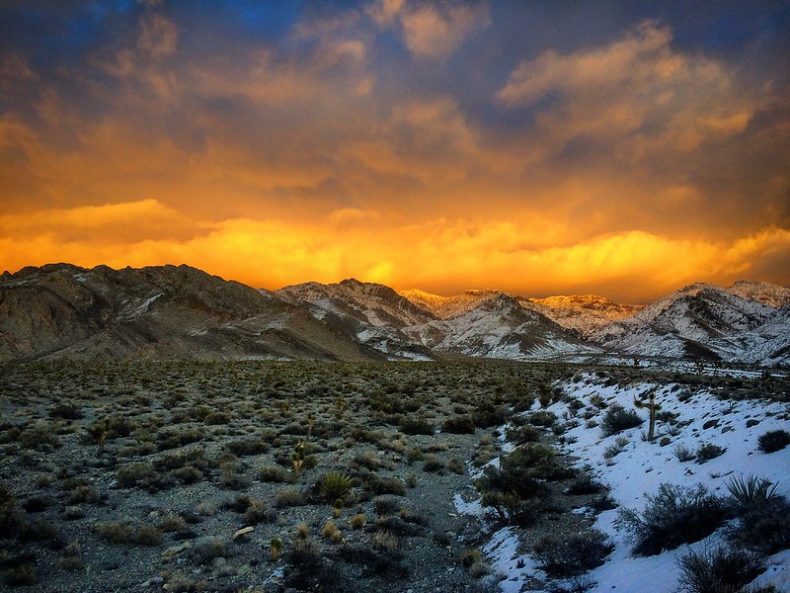
This post began with a question from my dear friend, the novelist and documentary filmmaker George Lerner.
Looking over two years of footage from South Texas, I noticed something striking: I have lots and lots of glorious images filmed around sunset, but scant few decent shots at sunrise. Why is this, I wondered — is there a difference from an optical or geophysical perspective between sunset and sunrise?
George copied me on this question he sent to my dad, who has taught atmospheric physics. (How the three of us became close like family is a story for another day.)
I had a knee-jerk answer to George’s question: the reason that sunsets are more amazing than sunrises is that you just see a hell of a lot more of them. So I chuckled to myself when I saw that Dad’s reply to George began, “I try to avoid the early morning hours so I do not see many sunrises.” (Neither of us are morning people.)
But it turns out that there’s more to it than just selection bias. There are scientific reasons that sunsets might be more scenic than sunrises.
Dad writes:
Generally speaking, the air in the morning is more stable and less polluted with particles that scatter light. Also the atmosphere heats up during the day and there is vertical movement of air which contributes to the formation of cumulus clouds that make for a better visual view of the setting Sun.
There’s some truth to that old saying, “Red sky at night, sailor’s delight; red sky in morning, sailors take warning.” “Those spectrally pure colors are telling you there’s a sizable swath of clear air off to your west that’s likely to be over you the next day,” National Oceanic and Atmospheric Administration (NOAA) meteorologist Stephen Corfidi told National Geographic.
It’s now possible to look up your sunrise and sunset forecast. SunsetWx provides predictions for sunrises and sunsets. Here’s how they describe their methodology:
We quickly realized that some things were more important than others, and decided on a weighting scheme. After many trial runs and verifications, we weighted moisture the most…Pressure, as well as the change in pressure over time was the next highest weighted factor as it helps recognize areas where cloud cover may dominate as well as FROPA’s. Finally, we included general cloud cover, to better account for regions where it is overcast, and help the model display it that way.
SunsetWx gives the highest weight to high clouds, and consider them necessary for a “vivid” sunset. Any place that has close to 100 percent cloud cover or is predicted to have precipitation during sunset (or sunrise) gets a “poor” rating.
One thing I’ve noticed over the years is that winter sunsets are especially amazing. I wondered if I thought that partly because I live in a place that’s surrounded by mountains, and the alpenglow on snowy peaks is hard to beat. But I’m not imagining it, according to Stephen F. Corfidi at NOAA’s Storm Prediction Center, fall and winter really do produce the most spectacular sunsets. His explainer is worth reading in full.
The takeaway is that if you’re seeking a spectacular display of light, sunsets are a better bet than sunrises and fall and winter are the best seasons. So if you’re living in the northern hemisphere, go out and enjoy peak sunset season!
Image: [sunset over some mountains] by Adam Bautz via Flickr
Here in the Pacific Northwest we have great early fall sunsets, but lose a lot of winter sunsets to cloud cover. On the west side of Whidbey Island I can’t the the sunrise directly, but I do occasionally catch an amazing sunrise alpenglow lighting up the Olympics as the sun shines briefly through the window beneath the cloud deck.
On the Oregon coast in January the sun dropping into the ocean drew spectators to the beach. I’m heading to Hawaii in a few weeks, where I have seen some beautiful sunrises. I’m left wondering why we love sunrises and sunsets so much. Do all cultures do this? Any animals?
Christie’s note on selection bias seemed right. I certainly see a lot more sunsets than sunrises, and the air quality may play a major factor. But I sense that the phenomena may also be less tangible — of expectation. A sunset promises the last rays of day, each moment diminishing (albeit boosted the processors inside high ISO cameras), whereas morning light gets increasingly white & harsh, and successively less golden.
The words of NOAA meteorologist Stephen Corfidi, in the accompanying article cited by CA, ring true to my experience .. the clouds make the sunset.
“… the most memorable sunsets tend to be those graced by at least a few clouds. Clouds can catch the last red-orange glow of the setting sun and the first rays of dawn, reflecting that light to the ground. But certain types of clouds are more closely associated with eye-catching sunsets than others. Why?
“To produce vivid sunset colors, a cloud must be high enough to intercept “unadulterated” sunlight…i.e., light that has not suffered attenuation and/or color loss by passing through the comparatively dirty boundary layer. This largely explains why spectacular shades of scarlet, orange, and red most often grace cirrus and altocumulus layers, but only rarely low clouds such as stratus or stratocumulus. When low clouds do take on vivid hues, as they most often do over tropical oceans and sometimes in fresh, polar air streams …. it is a clue that the lower atmosphere is very clean and, therefore, more transparent than usual.”